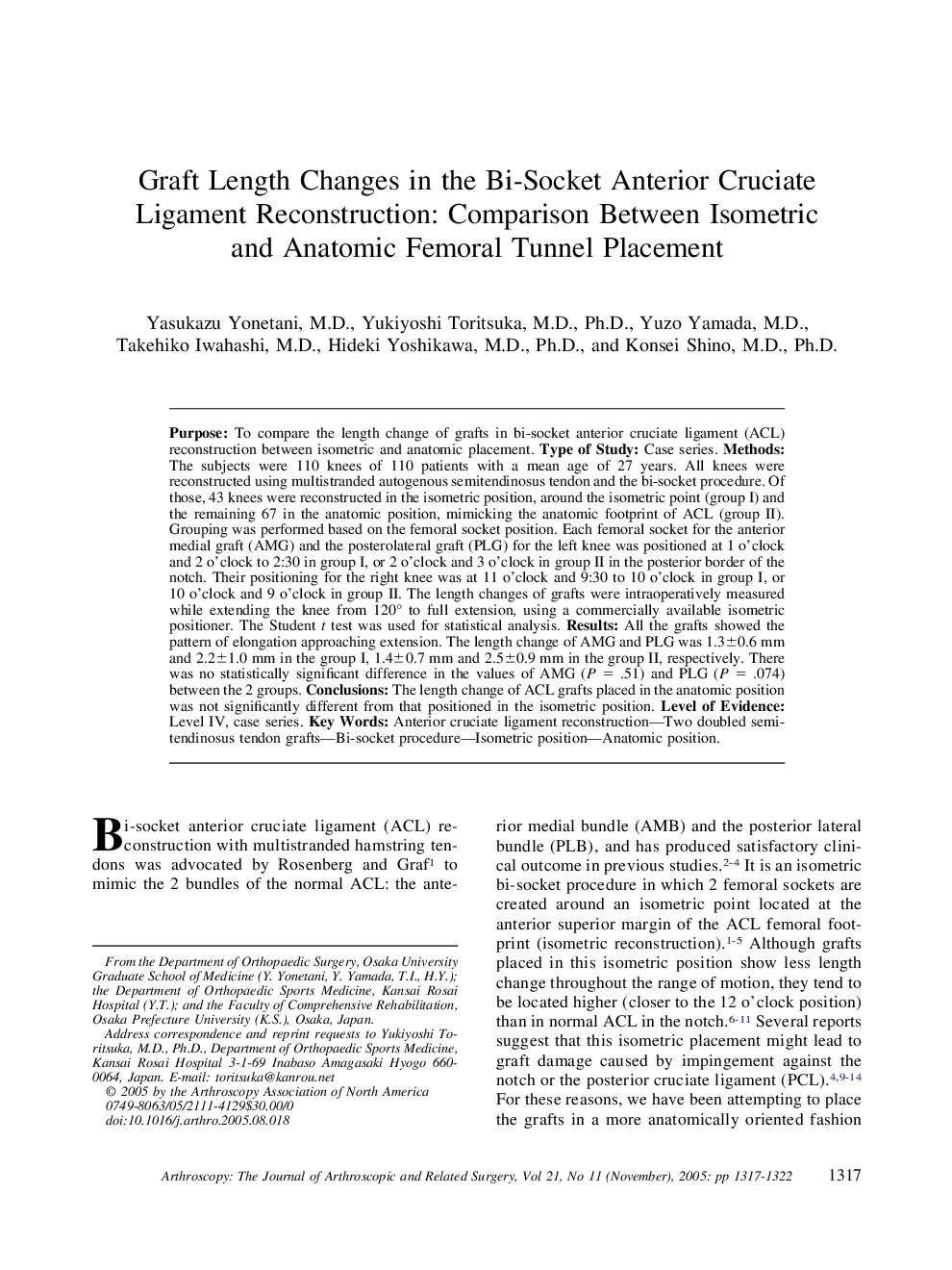| Article ID | Journal | Published Year | Pages | File Type |
|---|---|---|---|---|
| 10078771 | Arthroscopy: The Journal of Arthroscopic & Related Surgery | 2005 | 6 Pages |
Abstract
Purpose: To compare the length change of grafts in bi-socket anterior cruciate ligament (ACL) reconstruction between isometric and anatomic placement. Type of Study: Case series. Methods: The subjects were 110 knees of 110 patients with a mean age of 27 years. All knees were reconstructed using multistranded autogenous semitendinosus tendon and the bi-socket procedure. Of those, 43 knees were reconstructed in the isometric position, around the isometric point (group I) and the remaining 67 in the anatomic position, mimicking the anatomic footprint of ACL (group II). Grouping was performed based on the femoral socket position. Each femoral socket for the anterior medial graft (AMG) and the posterolateral graft (PLG) for the left knee was positioned at 1 o'clock and 2 o'clock to 2:30 in group I, or 2 o'clock and 3 o'clock in group II in the posterior border of the notch. Their positioning for the right knee was at 11 o'clock and 9:30 to 10 o'clock in group I, or 10 o'clock and 9 o'clock in group II. The length changes of grafts were intraoperatively measured while extending the knee from 120° to full extension, using a commercially available isometric positioner. The Student t test was used for statistical analysis. Results: All the grafts showed the pattern of elongation approaching extension. The length change of AMG and PLG was 1.3±0.6 mm and 2.2±1.0 mm in the group I, 1.4±0.7 mm and 2.5±0.9 mm in the group II, respectively. There was no statistically significant difference in the values of AMG (P = .51) and PLG (P = .074) between the 2 groups. Conclusions: The length change of ACL grafts placed in the anatomic position was not significantly different from that positioned in the isometric position. Level of Evidence: Level IV, case series.
Related Topics
Health Sciences
Medicine and Dentistry
Orthopedics, Sports Medicine and Rehabilitation
Authors
Yasukazu M.D., Yukiyoshi M.D., Ph.D., Yuzo M.D., Takehiko M.D., Hideki M.D., Ph.D., Konsei M.D., Ph.D.,
